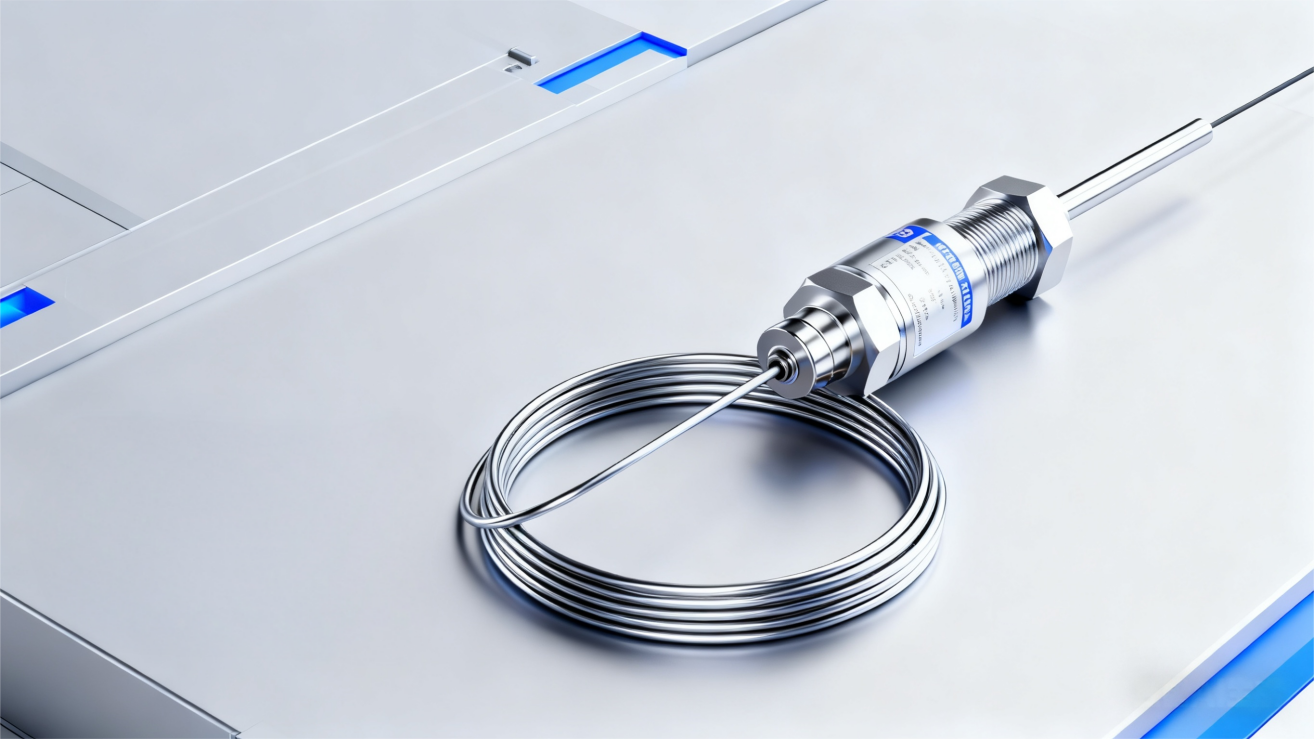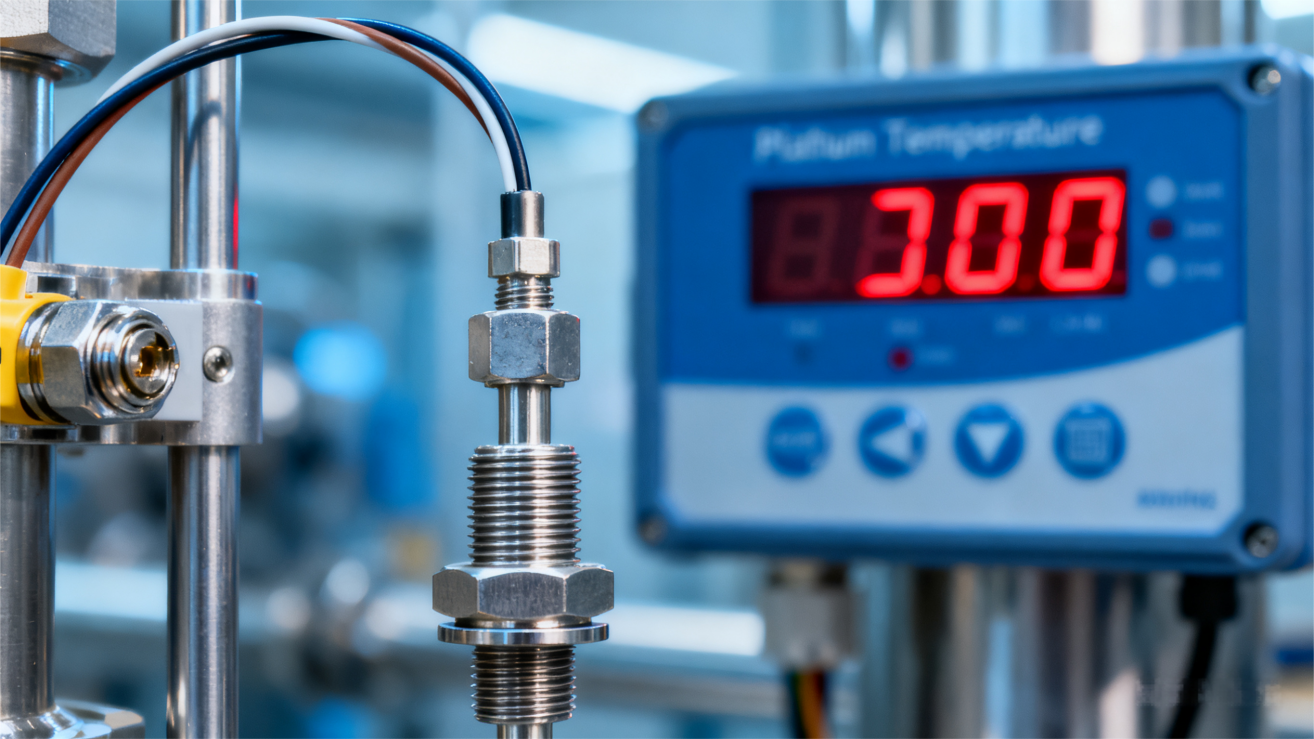Selecting an industrial temperature sensor is a critical decision for ensuring precision, reliability, and system compatibility in applications such as HVAC, petrochemical processing, automotive testing, and industrial automation. With options ranging from NTC thermistors to thermocouples and RTDs, engineers and procurement specialists must evaluate technical specifications, environmental factors, and integration requirements. This technical guide from Starlight Sensors outlines key considerations for choosing an industrial temperature sensor, providing actionable insights to optimize performance in demanding environments.
Why Sensor Selection Impacts Industrial Performance
Industrial temperature sensors are the backbone of process control, providing real-time data for monitoring and regulation. An unsuitable sensor can result in measurement errors, system inefficiencies, or premature failure, leading to costly downtime. By aligning sensor specifications with application requirements, you can achieve high accuracy, durability, and seamless integration.
Key Long-Tail Keywords:
How to choose an industrial temperature sensor
Industrial temperature sensor supplier
High-precision temperature sensor for industry
Custom temperature sensor for industrial applications
1. Define Application-Specific Technical Requirements
The first step in sensor selection is a detailed analysis of your application’s technical demands. Key parameters include:
Temperature Range: Determine the operational temperature range. For example, NTC thermistors typically operate from -50°C to 150°C with high sensitivity, while Type K thermocouples can measure up to 1,350°C, suitable for high-temperature processes like metal forging.
Environmental Conditions: Assess exposure to humidity, corrosive gases, or mechanical stress. Sensors with IP67 or IP68 ratings and 316 stainless steel housings are ideal for harsh environments, such as offshore oil platforms.
Accuracy and Tolerance: Precision-critical applications, like semiconductor manufacturing, may require sensors with accuracy of ±0.05°C, while general industrial processes may tolerate ±0.5°C.
Response Time (Thermal Time Constant): Fast-changing processes, such as engine testing, demand sensors with a thermal time constant (τ) of less than 1 second.
Technical Tip: Use a requirements matrix to map temperature range, environmental IP rating, accuracy, and response time to your application. For example, a chemical plant may require a sensor with -20°C to 200°C range, IP68 rating, and ±0.1°C accuracy.
2. Select the Appropriate Sensor Technology
Each sensor type has distinct technical characteristics. Below is a detailed comparison:
NTC Thermistors:
Principle: Resistance decreases non-linearly with temperature.
Beta Value: Typically 3,000–4,500 K, indicating sensitivity.
Accuracy: ±0.1°C to ±0.5°C in -20°C to 100°C range.
Applications: HVAC, battery management systems, and medical devices.
Limitation: Limited to moderate temperatures; not suitable for >200°C.
Thermocouples:
Principle: Voltage generated by the Seebeck effect at the junction of two dissimilar metals.
Types: Type K (Ni-Cr/Ni-Al, -200°C to 1,350°C), Type J (Fe/Constantan, -40°C to 750°C).
Accuracy: ±1°C to ±2°C, with drift over time due to material degradation.
Applications: Furnaces, gas turbines, and petrochemical reactors.
Limitation: Requires cold junction compensation (CJC) for precision.
RTD Sensors (Pt100/Pt1000):
Principle: Resistance increases linearly with temperature (e.g., Pt100 = 100Ω at 0°C).
Temperature Coefficient: 0.00385 Ω/Ω/°C (IEC 60751 standard).
Accuracy: ±0.03°C to ±0.1°C, with minimal drift.
Applications: Aerospace, laboratory research, and pharmaceutical processing.
Limitation: Higher cost and slower response compared to thermistors.
Infrared Sensors:
Principle: Measures emitted infrared radiation for non-contact temperature sensing.
Emissivity: Adjustable (0.1–1.0) to account for surface properties.
Applications: Moving objects (e.g., conveyor belts) or hazardous areas (e.g., steel mills).
Limitation: Sensitive to dust, smoke, or reflective surfaces.
Example: For a precision HVAC system operating at 10°C to 40°C, Starlight Sensors’ NTC thermistors with ±0.2°C accuracy and a 3-second response time are optimal.
3. Analyze Critical Technical Specifications
Beyond sensor type, evaluate the following specifications:
Accuracy and Linearity: Verify the sensor’s accuracy across the operating range. RTDs offer superior linearity, while thermocouples may require polynomial correction.
Output Signal: Common outputs include:
Analog: 4-20mA or 0-10V for PLC integration.
Digital: I²C, SPI, or Modbus for IoT-enabled systems.
Resistance/Voltage: Raw output for custom circuits.
Self-Heating Effect: For thermistors and RTDs, ensure the excitation current (e.g., <1mA for Pt100) minimizes self-heating errors. Long-Term Stability: Check drift specifications (e.g., ±0.05°C/year for RTDs) to ensure reliability over time. Frequency Response: For dynamic applications, confirm the sensor’s bandwidth supports rapid temperature changes (e.g., >10 Hz for automotive testing).
Starlight Sensors Advantage: Our datasheets provide detailed specs, including accuracy curves, self-heating coefficients, and output compatibility, ensuring seamless integration.
4. Ensure Environmental and Mechanical Robustness
Industrial environments demand sensors that withstand extreme conditions:
Ingress Protection (IP): IP67 or IP68 ratings protect against dust and water immersion (e.g., 1m depth for 30 minutes).
Material Compatibility: Use sensors with PEEK or PTFE coatings for chemical resistance in acidic or alkaline environments.
Vibration and Shock: Sensors compliant with IEC 60068-2-6 (vibration) and IEC 60068-2-27 (shock) are essential for heavy machinery.
Thermal Cycling: Ensure the sensor withstands repeated temperature cycles without hysteresis (e.g., <0.1°C for Starlight’s NTC thermistors).
Case Study: In a petrochemical plant, Starlight Sensors’ IP68-rated thermocouples with Inconel sheaths maintained ±1°C accuracy under 500°C and corrosive gas exposure.
5. Evaluate Calibration and Traceability
Calibration ensures sensor accuracy aligns with industry standards:
Calibration Standards: Choose sensors calibrated to NIST or ISO/IEC 17025 standards for traceability.
Calibration Points: For precision applications, request multi-point calibration (e.g., -20°C, 0°C, 100°C) to minimize interpolation errors.
Field Calibration: Select sensors with accessible calibration interfaces (e.g., via HART protocol) for on-site adjustments.
Drift Compensation: Use sensors with built-in algorithms or external software to correct long-term drift.
Starlight Sensors offers pre-calibrated sensors with NIST-traceable certificates, reducing setup time for critical applications.
6. Address System Integration and Interoperability
Seamless integration minimizes deployment challenges:
Electrical Compatibility: Verify voltage (e.g., 3.3V–24V) and current requirements match your control system.
Connector Types: Standard connectors (e.g., M12, DIN) simplify installation and replacement.
Protocol Support: For Industry 4.0 applications, choose sensors with IoT protocols like MQTT or OPC UA.
Signal Conditioning: Ensure compatibility with your signal conditioner or transmitter to avoid noise or amplification issues [Ideal Response]: Starlight Sensors provides sensors with plug-and-play compatibility for PLCs, SCADA systems, and IoT platforms, ensuring minimal integration effort.
7. Partner with a Trusted Industrial Temperature Sensor Supplier
A reliable supplier enhances your project’s success:
Certifications: Look for ISO 9001, RoHS, and ATEX certifications for quality and safety.
Technical Support: Access to application engineers for custom designs or troubleshooting.
Scalability: Suppliers like Starlight Sensors offer bulk pricing and rapid prototyping for large-scale deployments.
Conclusion: Optimize Your Sensor Choice with Starlight Sensors
Choosing an industrial temperature sensor requires a deep understanding of technical specifications, environmental demands, and integration needs. By evaluating sensor types, accuracy, durability, and supplier expertise, you can ensure optimal performance in your industrial application.
Explore Starlight Sensors’ range of NTC thermistors, thermocouples, and RTDs, designed for precision and durability. Contact our team to discuss your requirements or request a custom solution today.
Additional Resources
View Our Industrial Temperature Sensor Catalog
Download Our Technical Specification Guide
Learn About Our Calibration Services





